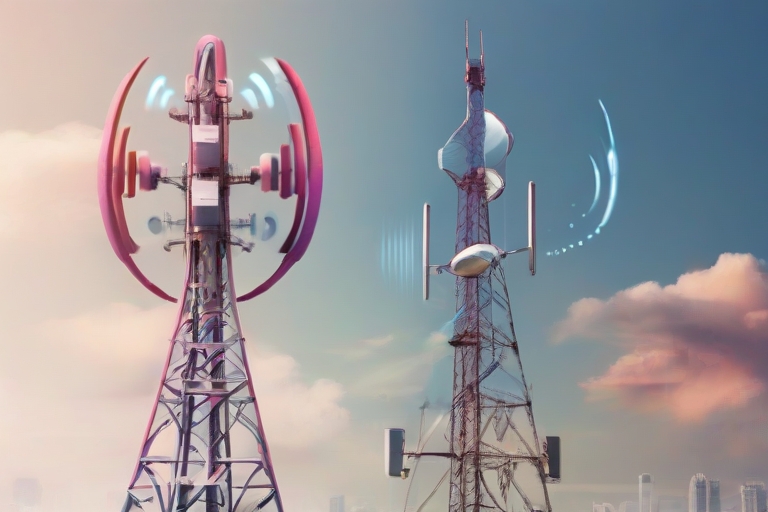Are you curious about the hype around 5G Ultra Wideband? Wondering how fast it really is and what it could mean for the future of technology? Look no further, because we’ve got you covered.
In this blog, we will explore how fast is 5G Ultra Wideband, from the technology behind it to real-world examples of its speed. We’ll also take a deep dive into factors that can affect its speed and compare it to regular 5G. But that’s not all! We’ll also discuss the advantages of 5G Ultra Wideband, including faster download and upload speeds, increased capacity, and lower latency.
let’s explore the exciting world of 5G Ultra Wideband together.
Understanding 5G Ultra Wideband
5G Ultra Wideband brings forth lightning-fast speeds and minimal delays, thanks to its operation on the mmWave spectrum. While its coverage remains limited, this technology ensures blazing-fast data transfer rates in specific areas. These high speeds are crucial for real-time applications such as video calls and gaming.
As US carriers gradually expand the deployment of 5G Ultra Wideband across select cities, the potential for a larger service area with this technology becomes increasingly promising. Embracing this dynamic spectrum leads to faster, reliable connectivity, catering to the increasing demand for high speeds and lower latency in our ever-evolving digital landscape.
The Technology Behind 5G Ultra Wideband
5G Ultra Wideband harnesses the power of mmWave frequency bands, including radio waves, to facilitate rapid data transfer, surpassing the capabilities of conventional wireless communication methods.
This revolutionary technology not only provides broader coverage but also ensures significantly accelerated speeds, revolutionizing the way we connect and communicate. Compatible with specific devices such as smartphones and routers, Verizon’s 5G Ultra Wideband capitalizes on the high-frequency mmWave spectrum to enable swift download and upload speeds, enhancing user experience and productivity.
With a strategic focus on targeted venues and select areas within cities, the deployment of 5G Ultra Wideband is set to redefine connectivity and pave the way for real-time applications, making it an indispensable innovation in the realm of wireless communication.
How fast is 5G ultra wideband compared to other wireless technologies?
5G ultra wideband is significantly faster than other wireless technologies. While 4G LTE can provide speeds of around 100 Mbps, 5G ultra wideband is capable of reaching peak speeds of 10 Gbps or even higher. This means faster downloads, smoother streaming, and improved overall network performance.
Real-world examples of how fast 5G Ultra Wideband can be

Verizon’s 5G Ultra Wideband, also known as 5G UW or 5G UWB, surpasses 4 Gbps, far outstripping the 30 to 35 Mbps of average 4G speeds. It allows quicker downloads, ideal for high-definition movie streaming, and enables faster uploads, enhancing content sharing over wireless networks. Its lower latency is vital for real-time experiences like gaming and video calls.
The mmWave spectrum supports swift, wireless communication speeds, with deployments expanding to offer faster speeds in select areas. This technology is revolutionizing the way we experience connectivity, opening new possibilities for real-time applications and faster, more efficient data transfer.
Factors that can affect the speed of 5G Ultra Wideband
The deployment of 5G Ultra Wideband plays a crucial role in ensuring faster data transfer speeds, making it essential for the overall performance. Leveraging the mmWave spectrum, 5G Ultra Wideband enables faster speeds and lower latency, resulting in a seamless and efficient user experience.
The extensive coverage offered by 5G Ultra Wideband facilitates faster internet connections in select areas, catering to specific service areas including urban and rural regions. Moreover, 5G Ultra Wideband delivers accelerated download and upload speeds for compatible devices, revolutionizing the way data is transmitted in real time.
Understanding the main differences in frequency bands becomes paramount for maximizing the potential speed benefits of 5G Ultra Wideband, ensuring that users can harness its capabilities to the fullest.
Comparing 5G and 5G Ultra Wideband
5G Ultra Wideband offers significantly higher speeds than standard 5G, thanks to its millimeter wave technology enabling faster data transfer. Although its coverage is limited, the faster download speeds greatly enhance the internet connection experience, particularly in select areas. This makes 5G Ultra Wideband ideal for applications requiring low latency, such as autonomous vehicles, where real-time data transfers are essential and slow speeds are not an option.
The limited coverage of 5G Ultra Wideband may be a challenge, but the high speeds it offers make it a game-changer for mobile phone users, especially in urban areas. Additionally, the short range of 5G Ultra Wideband can be advantageous in ensuring secure and efficient local data transfers, supporting various sectors including healthcare and public works.
Differences in Speed and Performance
5G Ultra Wideband surpasses 5G in both download and upload speeds, thanks to the utilization of mmWave spectrum. This technology enables faster data transfer, specifically catering to real-time applications like video calls and gaming.
The deployment of 5G Ultra Wideband is focused on providing faster speeds in select areas such as urban settings and venues, where the need for high speeds is paramount. Its design is targeted at offering rapid speeds, especially in locations with high user density. The technology’s emphasis on high-speed connectivity is evident in its capability to support dynamic spectrum allocation, ensuring efficient use of the available frequency bands.
The Impact of Spectrum on 5G and 5G Ultra Wideband
Spectrum plays a crucial role in determining the speed and performance of 5G and 5G Ultra Wideband. While both technologies utilize spectrum for data transfer, 5G Ultra Wideband takes advantage of mmWave spectrum, which allows for faster speeds compared to traditional 5G.
The utilization of mmWave spectrum enables 5G Ultra Wideband to offer enhanced download and upload speeds, making it ideal for real-time applications and high-density areas. This emphasis on utilizing specific spectrum bands contributes to the superior performance of 5G Ultra Wideband in terms of data transfer speed.
Advantages of 5G Ultra Wideband
5G Ultra Wideband boasts lightning-fast data transfer speeds, making it perfect for quick high-definition movie downloads. Additionally, its lower latency elevates real-time experiences like video calls and gaming to new heights. With ongoing expansion, this technology offers faster speeds in select areas, propelled by the mmWave spectrum that underpins its rapid wireless communication.
As 5G Ultra Wideband continues to revolutionize wireless connectivity, it promises to reshape how we experience the digital realm, offering unprecedented speed with minimal delay.
Faster Download and Upload Speeds
With 5G Ultra Wideband, users can experience faster download speeds, providing quicker access to content. Additionally, it optimizes the user experience for sharing content by delivering faster upload speeds. The mmWave spectrum in 5G Ultra Wideband supports faster wireless communication speeds, enhancing internet connection experiences for users.
Furthermore, the deployment of 5G Ultra Wideband is strategically focused on areas with high data demand, ensuring that users in these areas can benefit from its faster speeds. This technology enriches the user experience by enabling rapid access to a wide range of digital content and significantly improving internet connectivity in high-demand locations.
Increased Capacity and Lower Latency
Enhancing capacity and reducing latency are pivotal elements of 5G Ultra Wideband. This advanced technology enables faster data transfer speeds, catering to the increasing demand for high-speed connectivity. By significantly reducing latency, 5G Ultra Wideband elevates real-time experiences such as gaming and video calls, ensuring seamless interactions without delays.
The utilization of mmWave spectrum empowers 5G Ultra Wideband to support extensive coverage and enhanced capacity, making it a game-changer in the realm of wireless connectivity. The lower latency offered by this technology is particularly instrumental for applications that necessitate real-time data transfer, revolutionizing industries like healthcare and public works.
With the deployment of 5G Ultra Wideband expanding, the wireless connectivity landscape is experiencing a remarkable transformation, offering unparalleled experiences to users.
How Will 5G Ultra Wideband Impact Our Future?
5G Ultra Wideband is set to revolutionize mobile connectivity, offering faster speeds and lower latency. With its ability to enable faster data transfer speeds, it will transform how users access content.
In addition, the mmWave spectrum of 5G Ultra Wideband will support faster wireless communication in smart cities, improving internet connection experiences. The enhanced real-time applications made possible by the faster speeds and lower latency of 5G Ultra Wideband will have a significant impact on our future, with the 5G ultra wideband icon displayed on the status bar of devices connected to this advanced network.
Conclusion
In conclusion, 5G Ultra Wideband brings unprecedented speed and performance to the world of telecommunications. With lightning-fast download and upload speeds, increased capacity, and lower latency, it opens up a world of possibilities for businesses and individuals alike. However, it’s important to note that the actual speeds experienced in real-world scenarios can vary depending on factors such as network congestion and signal strength.
Despite these potential limitations, 5G Ultra Wideband is set to revolutionize industries and pave the way for innovative technologies such as autonomous vehicles, smart cities, and the Internet of Things.
Faqs
How much faster is 5G ultra wideband than 5G?
5G ultra wideband offers significantly faster speeds compared to regular 5G, with data transfer rates of up to 10 Gbps. This is several times faster than the maximum speeds of 4G LTE, which typically range from 50 to 150 Mbps. With 5G UWB, users can download large files, stream high-definition videos, and play online games with minimal lag or buffering. However, it’s important to note that the coverage area for 5G ultra wideband is currently limited and may not be available everywhere. In order to enhance the speed, users may have to migrate to a higher frequency spectrum like C-band, which covers frequencies within 4-8 GHz.
How fast is Verizon 5G ultra wideband home internet?
Verizon’s 5G ultra-wideband home internet offers impressive speeds of up to 1 Gbps, making it faster than most traditional cable internet services. This provides a high-speed browsing and streaming experience. However, the actual speed experienced may vary depending on factors like location and network congestion. To maximize speeds, ensure your device is 5G compatible and within range of a 5G tower.
- Understanding the Landscape of Cloud Vulnerability Management - March 25, 2024
- Quality Assurance Strategies for Startups: Ensuring Software Reliability - March 5, 2024
- Working of NLP to Improve Copywriting in AI Paraphrasing Tool - February 28, 2024

